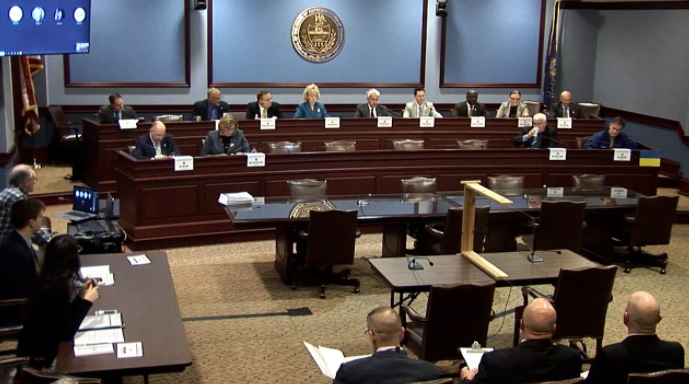Submitted Article
Rep. Karen Boback (Lackawanna/Luzerne/Wyoming), majority chairman of the House Veterans Affairs and Emergency Preparedness Committee, on Tuesday convened a public hearing in Harrisburg on Wednesday to examine Pennsylvania’s emergency medical services (EMS) crisis.
The committee heard from stakeholder groups about the recruitment and retention of personnel, financial needs, billing constraints, hospital emergency room protocols, local government support initiatives and COVID-19 challenges to the EMS system.
“Due to their funding needs, manpower shortages and low reimbursement rates by government programs and insurers, Pennsylvania’s EMS system is in crisis,” said Boback. “We are learning what is at stake if things do not change and what the Legislature can do to improve the EMS system.”
According to the Pennsylvania Department of Health, there are about 1,300 licensed EMS agencies in the Commonwealth and over 40,000 certified EMS providers. The EMS system responded to nearly 2.5 million calls for service during 2021.
However, committee members heard how the system is failing and putting the lives of Pennsylvania residents at risk.
“Thanks to many factors, now exacerbated by the impact of COVID-19 on transport volume, costs, staffing and more, these financial struggles have become dire,” Donald DeReamus, Ambulance Association of Pennsylvania board member told them. “Our organizations and clinicians are on the brink, just months, weeks, or even days from insolvency.”
Recruitment and retention: Many EMTs are choosing to not renew their certification.
“The number of EMTs that allow their certifications to expire and ultimately leave the profession continues to outpace those becoming certified,” said Aaron Rhone, Pennsylvania Department of Health Bureau of Emergency Medical Services interim director.
Financial needs: EMS agencies need a universal sustainable funding mechanism.
“Reimbursement fails miserably in covering the cost of readiness as well as the cost of EMS operations,” said DeReamus. “Since 2002, after implementation of the Medicare Ambulance Fee Schedule, costs have risen 70% while reimbursement rates have risen only 27% during the same period.”
Billing constraints: Legislation is needed to provide local governments with the ability to increase fees.
“Amending the statute to allow three mills for EMS and removing the current barriers required to increase the allowable mills for EMS funding to be consistent with the fire service will greatly improve flexibility and provide municipalities with an additional tool to provide EMS services for their communities,” noted Anthony Deaven, Pennsylvania Fire and Emergency Services Institute board member.
Hospital emergency room protocols: Changes are needed to reduce wait times for EMS crews.
“EMTs and paramedics often wait in a hall with their ambulance patient for several hours until and emergency room charge nurse finally takes custody of the patient and releases the ambulance,” testified West Hempfield Township Manager Andrew Stern. “While the crew is being ‘held hostage,’ they are unavailable to respond to any other emergencies, even if more emergent than the current patient.”
Local government support initiatives: Senate Bill 698 would allow for the creation of countywide public safety authorities.
“Counties recognize and respect the need for local input and decision making and believe Senate Bill 698 protects that autonomy while more efficiently providing for our residents,” said Tioga County Commissioner Mark Hamilton. “To be clear, counties are not seeking to take over the responsibility for EMS.”
COVID-19 challenges: The pandemic has made recruitment and retention efforts more difficult.
“Since COVID-19 began, EMS workers have left the field to seek non-medical careers or employment in different areas of public service,” explained Gary Vinnacombe, West Grove Fire Company EMS manager.
Boback called the four-hour hearing “very informative,” and said the committee will be working on legislative solutions to the EMS crisis.
“It’s clear that our EMS services face multiple challenges that demand our attention and support more than ever,” she concluded.
A video recording of the hearing is available for viewing at www.RepBoback.com/video.
